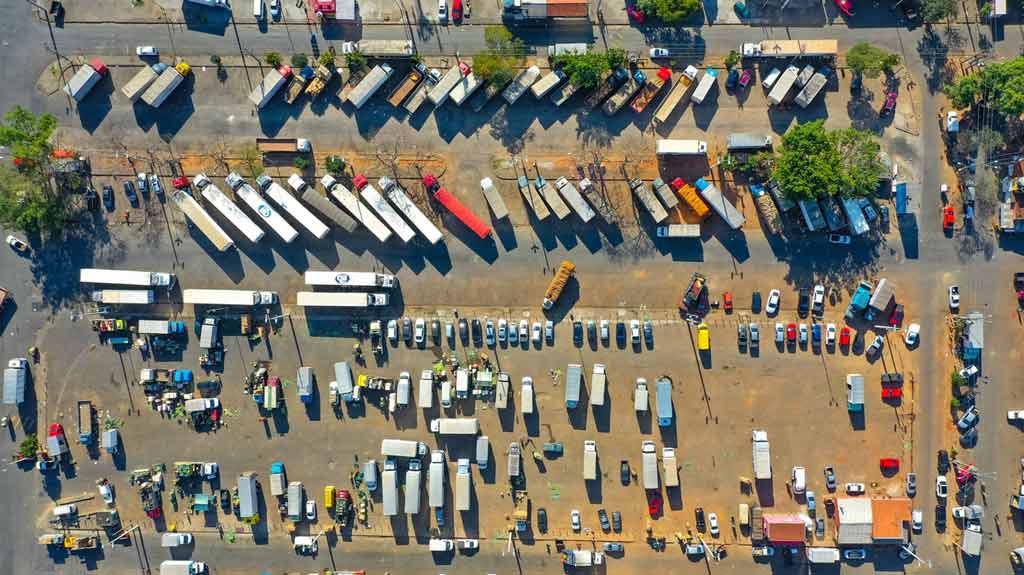Contrary to common belief, driving just any kind of vehicle isn’t that easy. Some would think that just because they got their license, that means they could drive just any vehicle out there, thinking they’re all just the same, just varying in sizes. What could possibly go wrong? Well, a ton of things could definitely go wrong if you do not have enough and proper knowledge as regards the vehicle you’re trying to drive, especially when you’re not used to driving a vehicle with the size you’re not used to driving.
Contents
Curb Weight vs. Gross Weight Ratio
Car weight can vary a lot. It all depends on the type of vehicle, the engine, and many other factors. Many people confuse the terms “curb weight” and “gross vehicle weight” as the same or the other. It may seem confusing that your vehicle could have two separate weights at the same time. However, these two can be easily differentiated and explained.
Curb Weight
The curb weight of your vehicle is the weight of the car with all of the standard equipment and amenities, with the exclusion of any passengers, cargo, or any other separately loaded items in it. Thus, the curb weight is the amount that the vehicle weighs when it is resting on the curb and not in use, thus the term ‘curb weight’. Generally, this is the standard weight that the manufacturer assigns to the car.
Gross Vehicle Weight Rating
The gross vehicle weight rating, or simply GVWR is the combined weight of the vehicle and all passengers including the accessories and cargo pieces in total. GVWR is particularly important for truck drivers, who may be carrying huge quantities of cargo that might alter the total weight of the vehicle considerably. Think of it as a weight limit for your specific vehicle, set by the automaker. Never should a vehicle be loaded beyond the manufacturer’s listed GVWR.
The driving force behind the GVWR for any vehicle is safety. Once a vehicle is overloaded, several problems can occur. For instance, if the vehicle is too heavy, the brakes may not be substantial enough to slow down or stop the vehicle effectively. The suspension components can become ineffective or possibly even break under the added strain, and overloaded tires generate more heat, making them more likely to blow out. For safety’s sake, the gross vehicle weight should never surpass the GVWR.
If you are still uncertain and want more information about the differences between curb weight and gross weight, including information on when these two figures are important to know, it is recommended to speak with a mechanic, a dealer, or another certified car services professional. There are also scales for weighing vehicles available on the market. These can help you determine the curb weight of your vehicle, which can then help you determine the GVWR of your vehicle if it is unknown or undetermined.
Average GVWR Per Vehicle Class
Depending on which vehicle class the vehicle you own or just driving falls under, it is important that you are aware of its gross vehicle weight rating to ensure safety, as well as to know the limitations and capacities of the vehicle. Here is a list of the average gross vehicle weight rating depending on the vehicle class.
- Light-Duty Vehicles have a GVWR of less than or equal to 10,000 pounds. Examples of these vehicles are Sedan and sport-utility vehicles (SUVs).
- Class 1: <6,000 lbs.
- Class 2: 6,001 – 10,000 lbs.
- Medium-Duty Vehicles’ GVWR is 10,001 to 26,000 pounds. An example of these are mini buses, bucket trucks, and school buses.
- Class 3: 10,001 – 14,000 lbs.
- Class 4: 14,001 – 16,000 lbs.
- Class 5: 16,001 – 19,500 lbs.
- Class 6: 19,501 – 26,000 lbs.
- Heavy-Duty Vehicles are those that have greater than 26,000 pounds GVWR, such as city transit buses and refuse trucks.
- Class 7: 26,001 – 33,000 lbs.
- Class 8: >33,000 lbs.

Overweight Vehicles
Although there are regulations on the weight of vehicles, carriers can still and are able to send out overweight vehicles, which can lead to damaged highways and additional maintenance costs. Research suggests that the cost of overweight vehicles could range from $265 million to $1.1 billion each year in the U.S. Enforcement of weight restrictions heavily relies on numerous weigh stations. However, with limited hours of operation, the success rate of the weigh stations has been calculated at around one percent.
Driver’s License
If you don’t know much about driving and the law, one might think that all licenses are the same. Unfortunately, that’s not the case at all. There are different classes of licenses that authorizes an individual to drive a certain kind or kinds of vehicle/s only. Just because you acquired your own license, doesn’t mean you can drive every vehicle out there. Here are different classes of non-commercial and commercial driver’s licenses.
Non-commercial Driver’s License
- Class A authorizes an individual to drive:
- Vehicle with a GVWR of equal or greater than 26,001 pounds
- Vehicles with a GVWR of 26,001 pounds or more provided the GVWR of the vehicle(s) towed is more than 10,000 pounds
- Class B authorizes an individual to drive:
- Vehicle with a GVWR of 26,001 pounds or more
- Vehicle with a GVWR of 26,001 pounds or more that is towing a vehicle with a GVWR no more than 10,000 pounds, or a farm trailer with a GVWR not exceeding 20,000 pounds
- A bus with a seating capacity of 24 passengers or more, including the driver
- Class C authorizes an individual to drive:
- Vehicle or combination of vehicles not included in Class A or B
- Vehicle with a GVWR of less than 26,001 pounds towing a farm trailer with a GVWR that not exceeding 20,000 pounds
- Vehicle designed and created to transport 23 or fewer passengers including the driver
- An autocycle.
- Class M gives authorization to an individual to drive a motorcycle.
Commercial Driver’s License
- Class A CDL provides authorization to an individual to drive any combination of vehicles with a GVWR of 26,001 pounds or more if the GVWR of the vehicle(s) being towed is/are more than 10,000 pounds.
- Class B CDL provide authorization to an individual to drive any:
- Vehicle with a GVWR of 26,001 pounds or more
- Vehicle with a GVWR of 26,001 pounds or more that is towing a vehicle with a GVWR not exceeding 10,000 pounds
- Vehicle designed and created to transport 24 passengers or more including the driver
- Class C CDL authorizes an individual to drive any vehicle or combination of vehicles that is not a Class A or B if the vehicle is:
- Designed and made to transport 16 to 23 passengers including the driver
- Used in transporting hazardous materials that require the vehicle to be placarded
As you can see, it may be an insignificant factor for some, but vehicle weights do have an impact on varying aspects of driving. It can affect matters such as license requirements, fuel costs, highway repairs and maintenance, and of course, public and private safety. Every vehicle owner and driver should be aware of the weight of their vehicles to ensure maximum safety and limitations of their vehicles, not only for their sake but for everyone surrounding them when they’re on the road.



